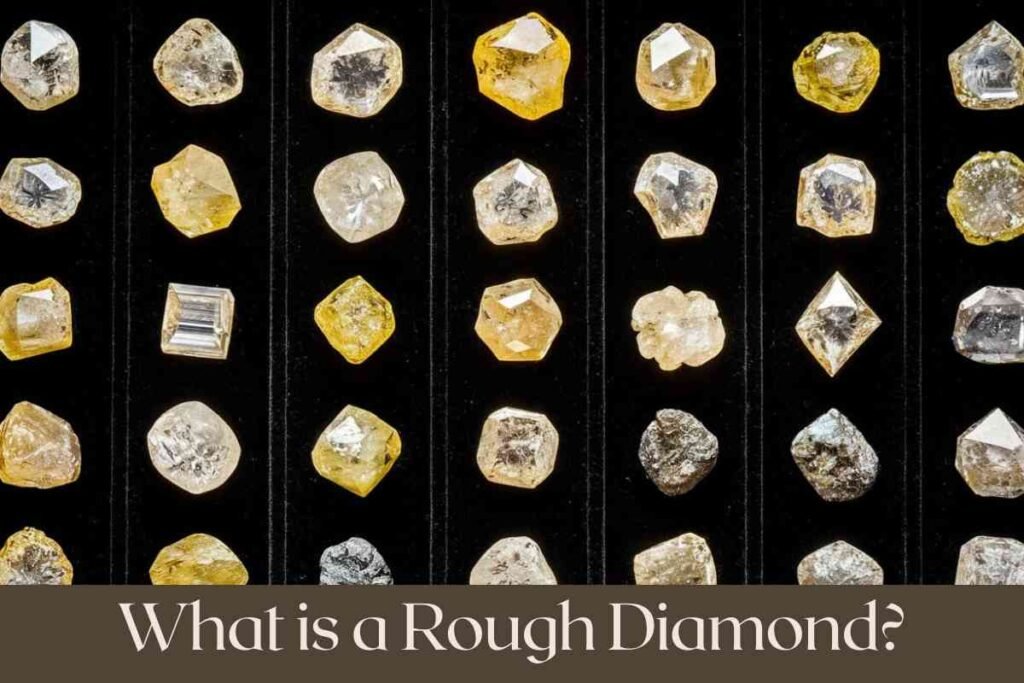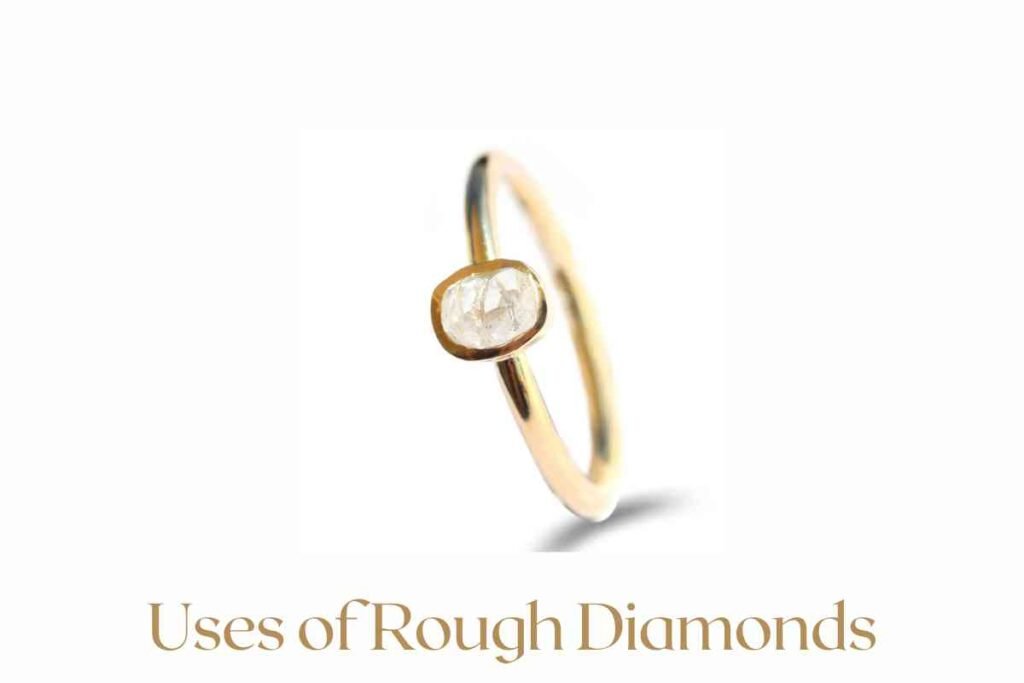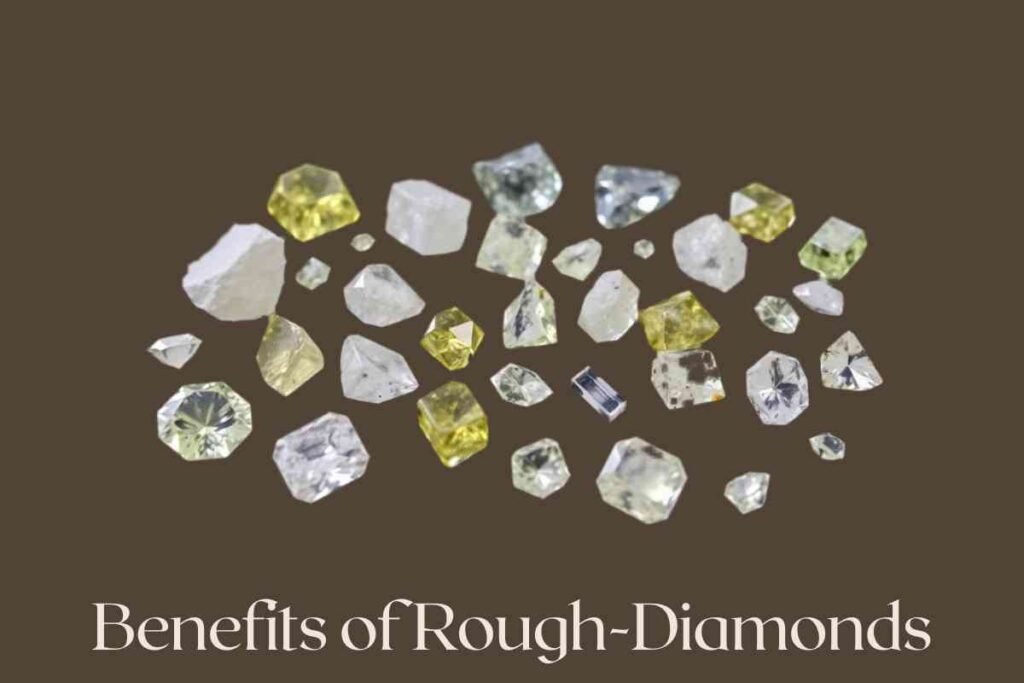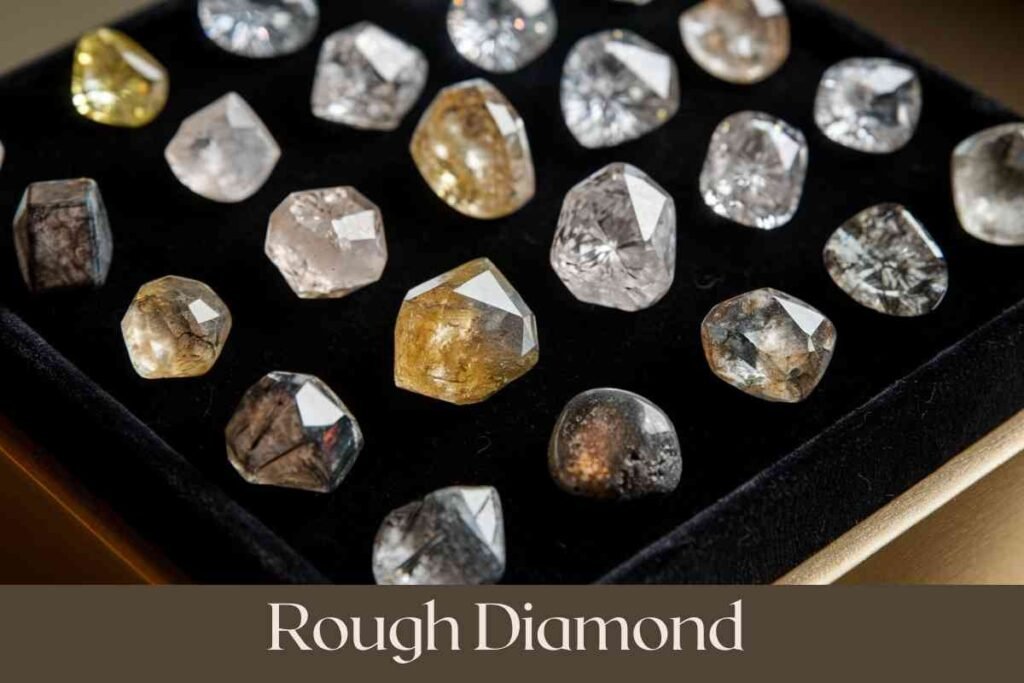Rough diamonds, known for their raw beauty and natural allure, hold a unique place in the world of gemstones. These unpolished gems, straight from the earth, serve as the foundation for exquisite jewelry and industrial applications.
This article delves into the fascinating world of rough diamonds, exploring their formation, types, uses, and much more.
What is a Rough Diamond?

A rough diamond is an uncut and unprocessed diamond, naturally formed deep within the Earth under extreme heat and pressure.
These diamonds showcase a variety of shapes, including octahedral, cubic, and triangular forms. The lack of polish and refinement makes them distinct from the dazzling brilliance of cut diamonds commonly seen in jewelry.
How are Rough Diamonds Formed?
Rough-diamonds are created over billions of years beneath the Earth’s surface. Carbon atoms are subjected to intense pressure and temperatures, fusing into a crystal lattice structure.
This process gives diamonds their incredible hardness and durability.Once formed, volcanic eruptions bring these gems closer to the surface, where they are mined.
Natural variations in temperature and pressure contribute to the diverse shapes and qualities of rough-diamonds.
Types of Rough-Diamonds
Based on Shape
Octahedral Diamonds: Featuring an eight-sided bipyramid shape, these are among the most common and sought-after rough-diamonds.
Cubic Diamonds: Characterized by their symmetrical cube-like structure.
Maccles: Triangular-shaped rough-diamonds often used in jewelry for their unique appearance.
Based on Color
White Rough-Diamonds: Often transparent or slightly opaque, ideal for cutting into high-quality gems.
Yellow Diamonds: Prized for their natural hue, ranging from light to intense yellow.
Black Diamonds: Unique for their deep, dark coloration and used in artistic jewelry designs.
Uses of Rough Diamonds

Jewelry
Rough-diamonds are increasingly popular in jewelry for their natural and rustic charm. Customizable rings, necklaces, and bracelets often feature raw diamonds as their centerpiece.
Shops like The Raw Stone and Rough Diamond World specialize in creating stunning engagement rings and other jewelry pieces from these gems.
Industrial Applications
Rough-diamonds also play a crucial role in industries due to their unmatched hardness. They are used for cutting, drilling, and grinding tools.
How to Buy Rough Diamonds
When purchasing rough-diamonds, it is essential to consider key factors such as carat weight, color, clarity, and the potential for cutting.
These factors significantly influence the diamond’s value and suitability for your needs, whether for jewelry or industrial applications.
Reliable Retailers for Rough-Diamonds
IndiaMart: This online marketplace offers a wide variety of rough-diamonds, ranging from affordable industrial-grade stones to high-value gems. Buyers can browse through options and connect with suppliers directly.
Rough Diamond World: Known for its extensive collection of rough-diamonds, this retailer specializes in offering unique and ethically sourced diamonds for both individual and professional buyers.
The Raw Stone: Specializing in ethically sourced diamonds, The Raw Stone provides customizable options for jewelry and unique gems with natural appeal.
Pricing Examples
By carefully assessing these factors and exploring trusted retailers, you can make an informed decision when purchasing rough-diamonds, whether for personal collection or professional use.
Benefits of Rough-Diamonds

Natural Appeal: Their unprocessed state provides a rustic, organic beauty.
Affordable Options: Compared to polished diamonds, rough-diamonds are often more cost-effective.
Versatility: Suitable for both industrial and aesthetic uses.
Conclusion
Rough diamonds, with their natural charm and versatility, offer a glimpse into the Earth’s incredible geological processes.
Whether as a rustic centerpiece for jewelry or a vital tool in industrial applications, these unpolished gems continue to captivate collectors and professionals alike.
By understanding their formation, types, and uses, you can fully appreciate the value of these remarkable stones. Looking for more great reads? Check out our homepage maxxfour.in for trending articles and insightful blog posts on various topics.
FAQs
What is the difference between a rough diamond and a polished diamond?
A rough-diamond is uncut and unprocessed, while a polished diamond has been refined for enhanced brilliance and symmetry.
Where are rough-diamonds found?
Major sources include Africa (Democratic Republic of Congo, South Africa), Canada, and Russia.
Can rough diamonds be used in engagement rings?
Yes, many jewelers offer customizable engagement rings featuring rough-diamonds, popular for their raw beauty.
How do I identify a rough diamond?
A rough-diamond can be identified by its natural crystal shape, high hardness, and unique luster.
Are rough diamonds eco-friendly?
Ethical sourcing practices and conflict-free certifications ensure eco-friendly and socially responsible options.
Why are some rough-diamonds black?
Black diamonds owe their coloration to the presence of graphite or inclusions within the diamond.
How much does a rough diamond cost?
Prices vary widely based on carat weight, color, and clarity, ranging from ₹111 per carat for industrial grades to $45,000 for rare specimens.
Can I polish a rough diamond myself?
Polishing requires specialized skills and equipment. It is best done by professionals to preserve the diamond’s value.







